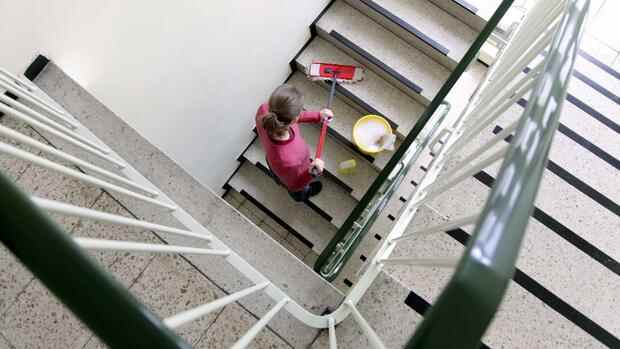In a current policy brief, the Institute for Economic and Social Sciences (WSI) of the union-related Hans Böckler Foundation analyzed who would benefit from the planned increase. The most important questions and answers.
The WSI uses data from the Socio-Economic Panel (SOEP), a household survey of around 30,000 people carried out regularly by the German Institute for Economic Research (DIW). Monthly earnings or hours worked are also recorded.
According to this, in 2019 – by then the SOEP data will suffice – almost 7.9 million or 23 percent of employees in their main job earned less than twelve euros per hour. If you add in the 1.3 million employees with lower hourly wages in part-time jobs, you get 9.2 million people who would have benefited from an increase in the minimum wage to twelve euros two years ago.
Top jobs of the day
Find the best jobs now and
be notified by email.
This coincides, for example, with statements made by the SPD candidate for Chancellor Olaf Scholz, who had promised a “salary increase for ten million citizens”. If you extrapolate the data from 2019 with the average increase in hourly wages of 4.3 percent achieved since then until 2021, the number of employees with an hourly wage below twelve euros in full and part-time jobs is currently just under 8.7 million – and thus around half a million lower than in 2019.
However, the WSI points out that the corona pandemic has led to job cuts in some industries with comparatively low average wages, for example in the hospitality industry or in parts of the retail sector. The number of employees with an hourly wage of less than twelve euros could therefore be somewhat overestimated, as the update to 2021 is based on the employee structures of 2019.
Who works particularly often for less than twelve euros an hour?
According to the WSI study, two out of three employees with an hourly wage of less than twelve euros are women. Of the part-time workers of both sexes, 41 percent earn less, of the mini-jobbers 81 percent. If you look at individual industries, building management had the highest rate of employees in 2019 with almost 69 percent who earn less than twelve euros per hour in their main job.
At the time, the share in the catering trade was around 64 percent, in retail a good 45 percent and in postal and courier services 35 percent. According to the study two years ago, some employees in industrial sectors earned less than twelve euros, in the electrical industry it was a good twelve percent, in the chemical industry just under nine percent and in mechanical engineering around six percent.
The study also shows, however, that a minimum wage of twelve euros would be important not only for helper activities but also for skilled workers. In 2019, for example, almost nine out of ten gastronomy specialists earned less, with salespeople it was almost 55 percent, and among medical and dental specialists around 46 percent.
How has the number of employees with hourly wages below twelve euros changed by 2019?
According to earlier studies, around 8.7 million or 27 percent of employees in their main job received less than twelve euros in 2017. If you also take part-time jobs into account, a total of eleven million people earned less. The general wage trend has contributed to the fact that the proportions were lower two years later.
However, the author of the study, Toralf Pusch, points out that the decline could have been somewhat smaller than assumed because the SOEP recorded fewer employment relationships overall than in the data from the Federal Employment Agency (BA) or the earnings survey of the Federal Statistical Office.
How much does an increase in the minimum wage to twelve euros affect collective bargaining autonomy?
A lower wage limit set by the legislator also has an impact on wage negotiations between employers and trade unions. Employer President Rainer Dulger had argued that a minimum wage of twelve euros would encroach on more than 190 collective agreements and make over 570 collectively negotiated wage groups superfluous.
According to the WSI study, just under eleven percent of the full-time employees with a collective agreement in 2019 received less than twelve euros per hour. Among the corresponding employees in companies not bound by collective bargaining agreements, however, the rate was almost a third.
According to the data updated to 2021, 1.5 million or 9.5 percent of the collective bargaining employees still work in their main job at hourly wages of less than twelve euros. For example, the collectively agreed minimum wage in the building cleaning sector is currently 11.11 euros per hour.
Unskilled nurses have been receiving twelve euros an hour since September, and the industry minimum wage in waste management was only raised to 10.45 euros an hour in October. There are also wage groups with less than twelve euros hourly wage in the collective bargaining agreements of the public sector.
An increase in the statutory lower wage limit to twelve euros would mean an average wage increase of one percent for employees subject to collective bargaining agreements. Across all employees in the main job, it would be 2.8 percent.
More: The minimum wage is becoming the plaything of politics
